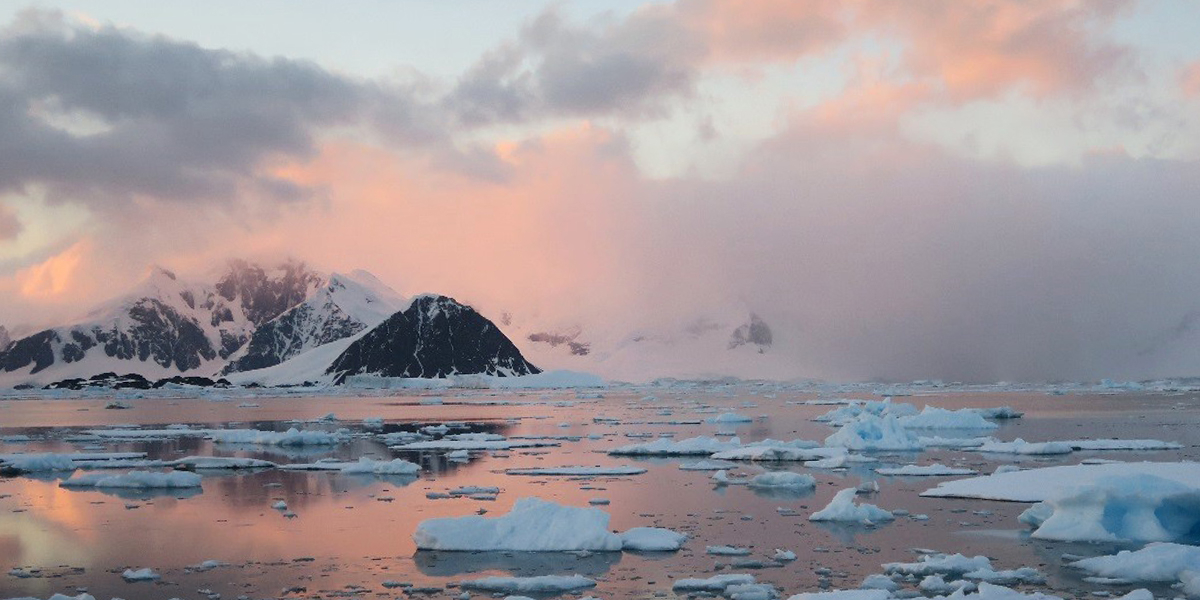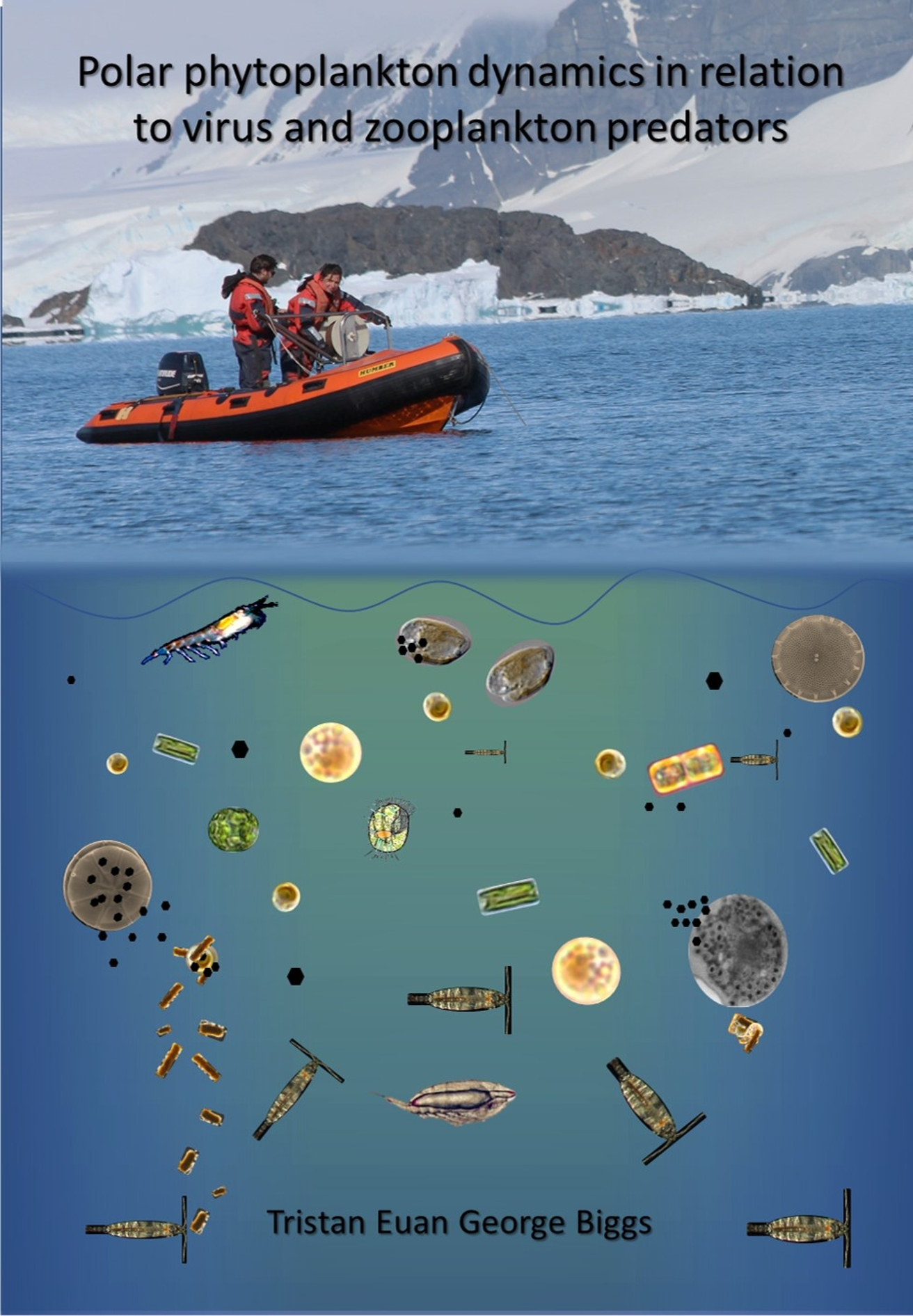Virus activity essential for understanding polar phytoplankton dynamics and future change

Phytoplankton forms the base of the food web and as such it is essential to understand not only what drives their production, but also which mortality factors regulate their biomass. Biggs: ‘My challenge during this PhD research was to better understand the seasonal dynamics of polar phytoplankton, in relation to viruses and zooplankton predators, as well as environmental variables.’ The abundance of phytoplankton is controlled by both bottom-up environmental factors as well as top-down predation pressure. Traditionally, zooplankton ‘grazers’ are accredited the largest role in phytoplankton losses.
Viral lysis as mortality agents
More recently, virus-induced mortality of unicellular primary producers (viral lysis) has attracted attention as another potentially important mortality agent. Biggs: ‘The ecological significance of viral lysis of phytoplankton in cold polar waters is vastly understudied. It urgently deserves more attention as it impacts energy and carbon flow very differently than grazing. Viral lysis results in a more regenerative food web as it diverts matter and energy away from higher trophic levels.’
With his thesis, Biggs demonstrates that all groups of polar phytoplankton are prone to substantial viral lysis, even to the extent that one cannot adequately explain their seasonal dynamics without considering this mortality factor. Ice-type, light availability and temperature strongly influence phytoplankton community composition, zooplankton activity as well as virus production and infectivity.
These new insights in polar phytoplankton dynamics form an essential contribution to a stronger baseline for future studies. Biggs: ‘Without a baseline that includes rates of viral lysis, it is difficult to predict potential ecosystem alterations due to global climate change.’ He further stresses the importance of complementary approaches to advance the understanding of global climate change in the productive coastal waters of the Southern and Arctic Ocean.
Defense
Polar phytoplankton dynamics in relation to virus and zooplankton predators
Tristan E.G. Biggs
December 8, 2020
12:00
University of Amsterdam
Supervisor: Prof. dr. C.P.D. Brussaard
Co-supervisor: Prof. dr. D.W. Pond.
